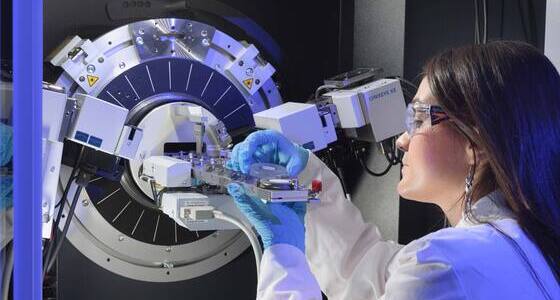Materials Characterization
Different analytical approaches require different materials characterization services. Atomic Echo Labs Laboratories uses over 30 different materials characterization methods to provide answers to our customers.
Generally the technique or series of techniques used for a given problem are selected based on the information needed and the form the sample is in. Most of the common techniques are for the analysis of solid samples, although liquid and gas sampling are also possible.
Atomic Echo Labs materials characterization services may be applied to:
- Research & development: for basic research and the testing of new concepts and materials
- Process development: to test new processes, designs and tools
- Production: to qualify incoming materials; monitoring; quality control
- Process improvement: to monitor process changes and subsequent process performance
- Failure analysis: to investigate problems for contamination/defect analysis; to identify contaminant sources; for good/bad comparisons
In some cases, the material of interest has already been identified but further information about specific properties is required, e.g. interface sharpness, the depth distribution of a particular element, morphology, crystal structure, thickness, stress, and quality (or many other characteristics). In other cases, the material or component of interest has not been identified and is not well characterized. Information is required about the identity and composition of the material.
The following are areas where materials characterization methods can be very helpful.
Thin Film Analysis
Thin film analysis covers a range of possible scenarios which strongly influence the choice of techniques used:
- Film thickness can range from the angstrom/Å (10-10 m), through the micron/µm range (10-6 m) up to millimeter/mm (10-3 m).
- Measurement sensitivity varies between techniques, from the atomic% range down to parts-per-billion (ppb).
- The lateral analytical area could be effectively unlimited in size or could be very restricted.
Films can generally be analyzed in two ways: vertically, from the top down or from the bottom up; or horizontally as a cross-section. Top-down analyses at the surface can provide roughness, morphology, and surface composition and contaminant information. Subsequent sputtering can uncover additional information, such as thickness, composition, the vertical distribution of elements and dopant and contaminant levels. Cross-sectional analyses can reveal layer thickness, grain size, and crystallinity.
Depth Profiling
Depth profiles are plots that show concentration (y-axis) with respect to depth (x-axis). They can be obtained by continuously monitoring specific species of interest with respect to depth (e.g. SIMS), or in a stepwise manner by removing material, measuring, and then repeating the process (e.g. XPS or Auger). The thickness of the layers of interest and the detection limits required (or that are achievable) are important factors in determining the best technique(s) for a given sample.
If not carried out and interpreted properly, artifacts and errors can be introduced into depth profiles due to the potential complexity of the measurement and sample. Atomic Echo Labs has a thorough understanding of how to acquire depth profiles under optimized conditions without introducing needless artifacts, based on many years of prior experience across many sample types. Similarly, correct and accurate interpretation of the data, also provided by Atomic Echo Labs, is also extremely important.
Crystallinity
While most other materials characterization analytical techniques provide elemental or molecular information from a sample, X-ray Diffraction (XRD) is unique in providing a wide variety of information on structure, crystalline phase (polymorphs), preferred crystal orientation (texture), and other structural parameters such as crystallite size, percent crystallinity, strain, stress, and crystal defects.

